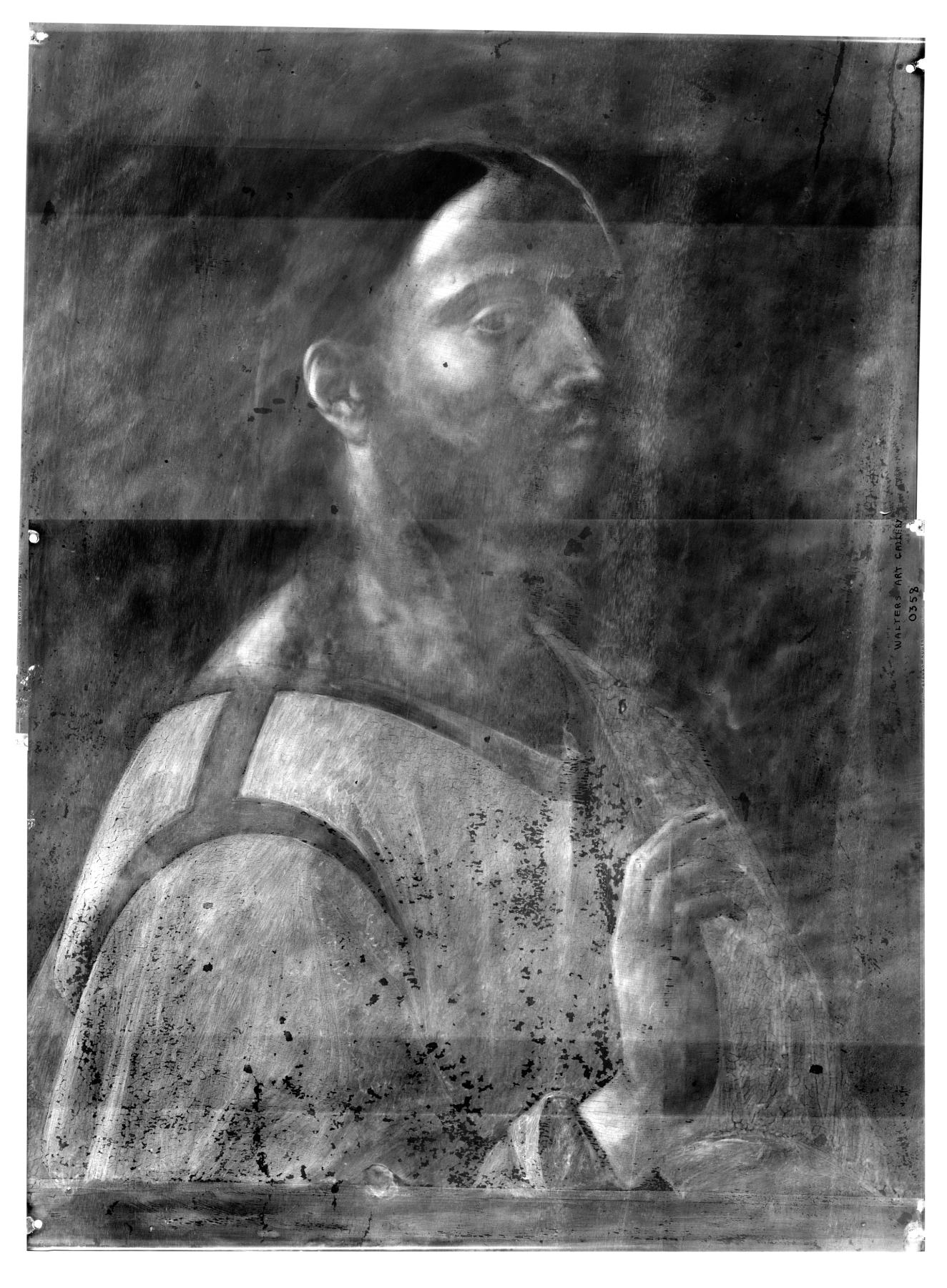Christ as the Savior
(Renaissance Europe )
The bust-length Christ appears in a three-quarter view with his hand slightly raised, as if he is about to turn and offer the viewer a gesture of blessing. The parapet in the foreground is a motif derived from Netherlandish portaiture. "Portraits” of Christ, such as this, became popular in the northern Italy in the early 16th century. They were usually intended for domestic interiors, where they served as the focus for daily prayer and allowed the figure of Christ to keep a watchful eye over the household. This example, attributed to Giovanni Speranza, is derived from a painting now at the Galleria Sabauda, Turin, by Speranza’s teacher, Bartolomeo Montagna (ca. 1450-1523). For a work by Montagna at the Walters, see 37.1036.
Provenance
Provenance (from the French provenir, 'to come from/forth') is the chronology of the ownership, custody, or location of a historical object. Learn more about provenance at the Walters.
Bernard Berenson [date and mode of acquisition unknown]; Henry Walters, Baltimore, ca. 1915 [mode of acquisition unknown] [through Berenson]; Walters Art Museum, 1931, by bequest.
Geographies
Italy, Vicenza (Place of Origin)
Measurements
Painted surface H: 23 7/16 x W: 17 3/4 x D: 13/16 in. (59.6 x 45.1 x 2 cm)
Credit Line
Acquired by Henry Walters, ca. 1915
Location in Museum
Not on view
Accession Number
In libraries, galleries, museums, and archives, an accession number is a unique identifier assigned to each object in the collection.
In libraries, galleries, museums, and archives, an accession number is a unique identifier assigned to each object in the collection.
37.527




